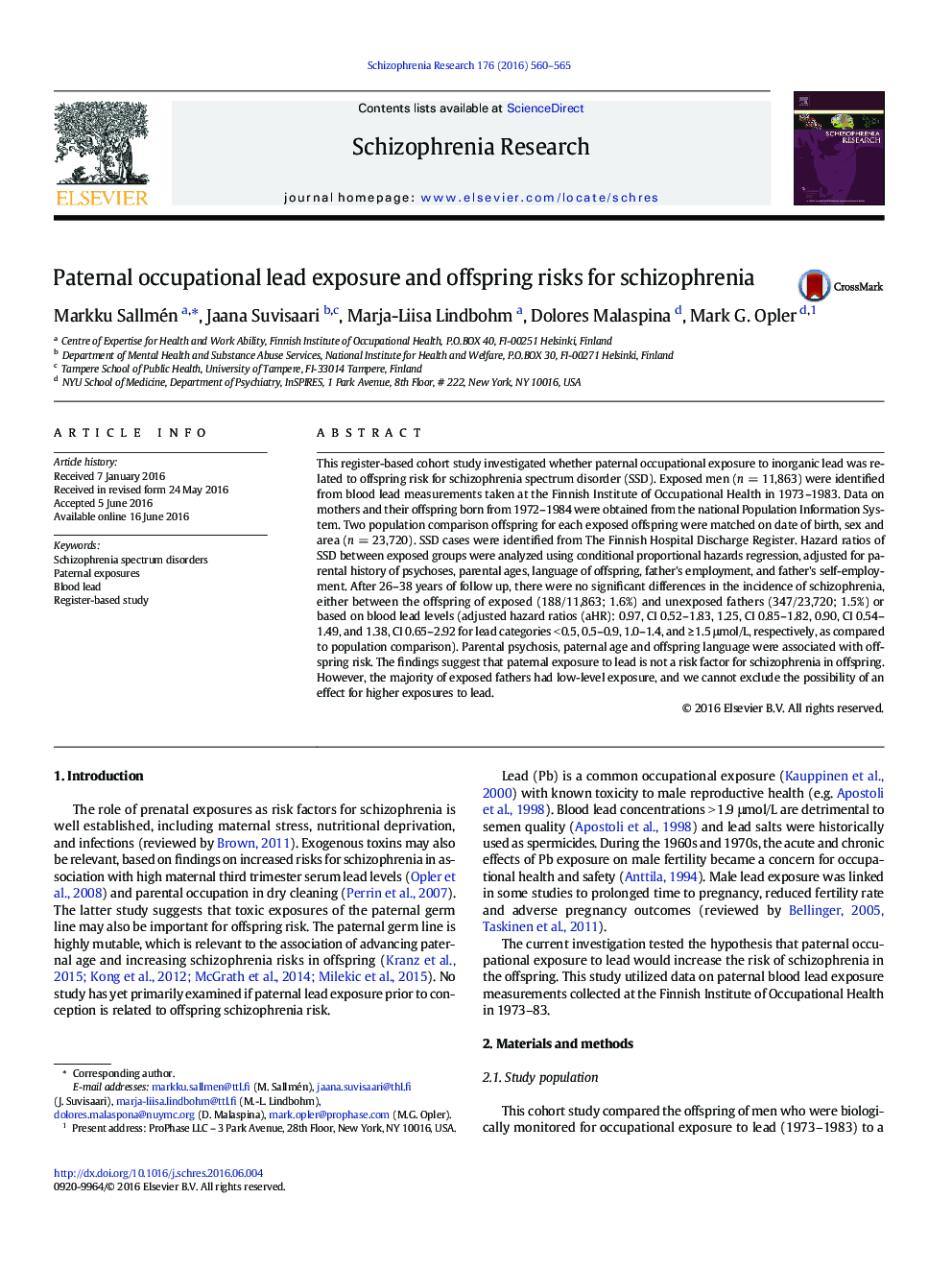| Article ID | Journal | Published Year | Pages | File Type |
|---|---|---|---|---|
| 4935232 | Schizophrenia Research | 2016 | 6 Pages |
This register-based cohort study investigated whether paternal occupational exposure to inorganic lead was related to offspring risk for schizophrenia spectrum disorder (SSD). Exposed men (n = 11,863) were identified from blood lead measurements taken at the Finnish Institute of Occupational Health in 1973-1983. Data on mothers and their offspring born from 1972-1984 were obtained from the national Population Information System. Two population comparison offspring for each exposed offspring were matched on date of birth, sex and area (n = 23,720). SSD cases were identified from The Finnish Hospital Discharge Register. Hazard ratios of SSD between exposed groups were analyzed using conditional proportional hazards regression, adjusted for parental history of psychoses, parental ages, language of offspring, father's employment, and father's self-employment. After 26-38 years of follow up, there were no significant differences in the incidence of schizophrenia, either between the offspring of exposed (188/11,863; 1.6%) and unexposed fathers (347/23,720; 1.5%) or based on blood lead levels (adjusted hazard ratios (aHR): 0.97, CI 0.52-1.83, 1.25, CI 0.85-1.82, 0.90, CI 0.54-1.49, and 1.38, CI 0.65-2.92 for lead categories < 0.5, 0.5-0.9, 1.0-1.4, and â¥Â 1.5 μmol/L, respectively, as compared to population comparison). Parental psychosis, paternal age and offspring language were associated with offspring risk. The findings suggest that paternal exposure to lead is not a risk factor for schizophrenia in offspring. However, the majority of exposed fathers had low-level exposure, and we cannot exclude the possibility of an effect for higher exposures to lead.
